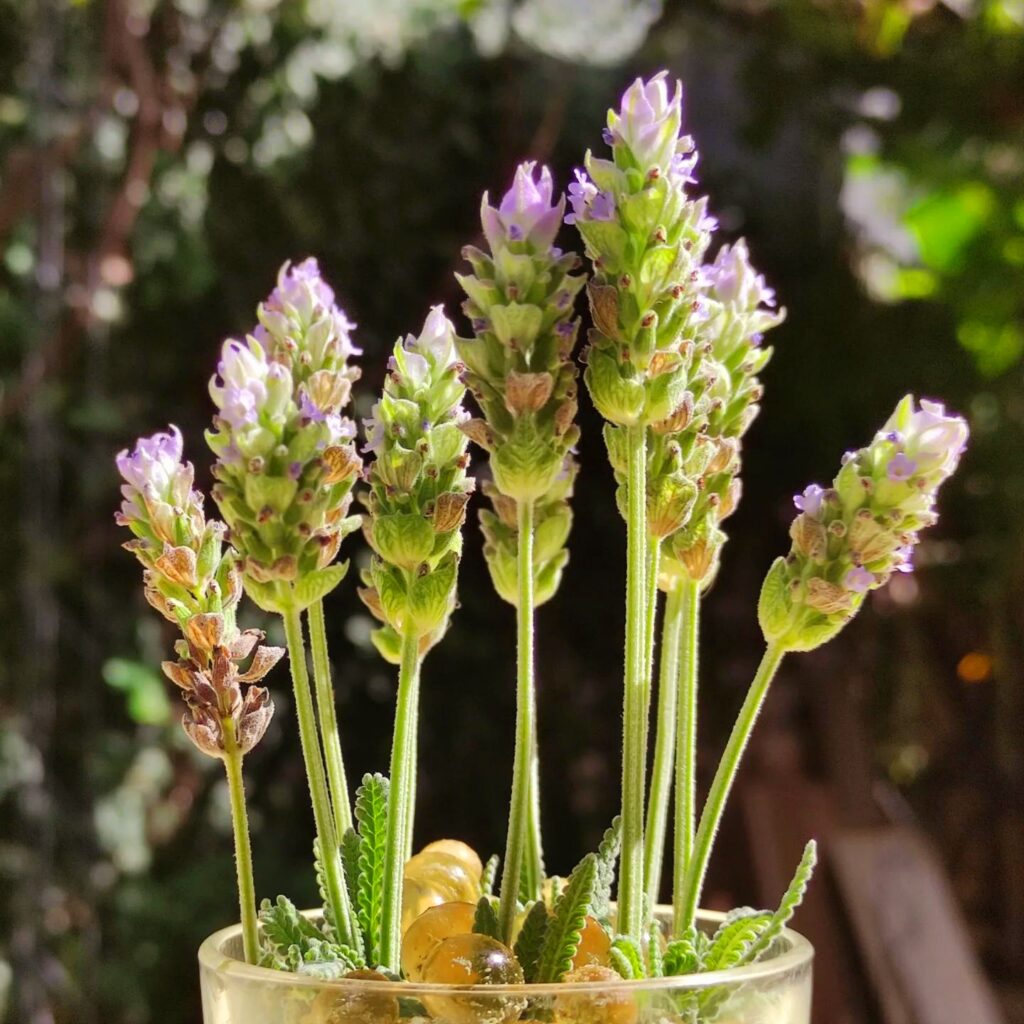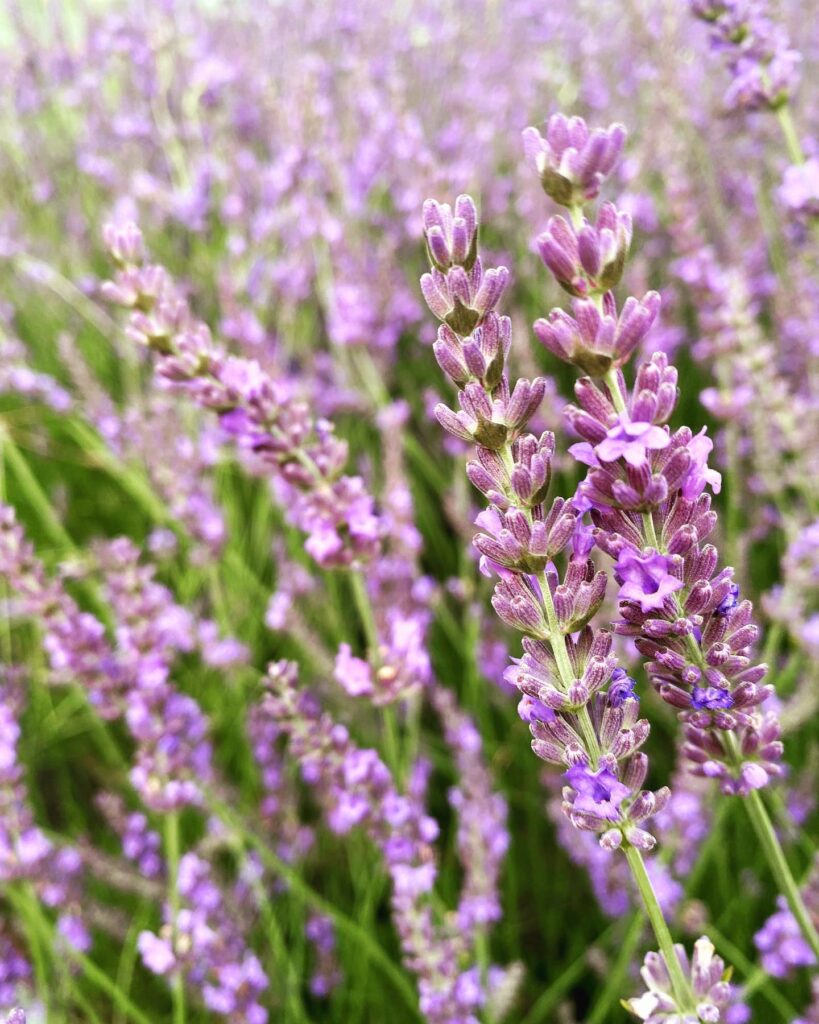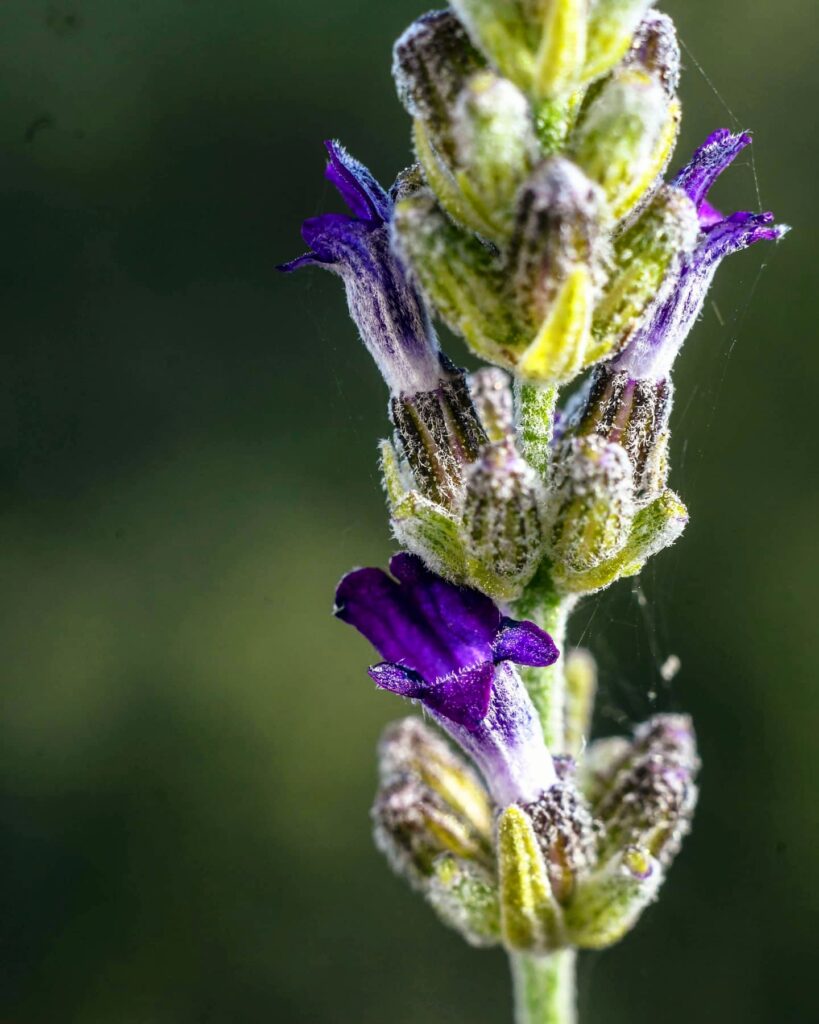If you’re considering growing lavender indoors, you’ll discover there’s more to this fragrant herb than meets the eye. While most people think of lavender as a single variety with its signature purple blooms, you’ll actually find numerous cultivars that can thrive in your indoor space. From the classic English lavender with its sweet aroma to the unique pine-cone shaped flowers of Spanish varieties, each type brings its own character to your home environment. Whether you’re looking for compact growth, distinctive blooms, or specific fragrance notes, understanding the different lavender varieties will help you choose the perfect match for your indoor garden.
Contents
- 1 English Lavender
- 2 French Lavender
- 3 Spanish Lavender
- 4 Goodwin Creek Grey
- 5 Vera Lavender
- 6 Munstead Lavender
- 7 Dutch Lavender
- 8 Canary Island Lavender
- 9 Hidcote Lavender Varieties
- 10 Sweet Lavender
- 11 Phenomenal Lavender
- 12 Egyptian Lavender
- 13 Portuguese Lavender
- 14 Spike Lavender
- 15 Italian Lavender
- 16 Woolly Lavender
- 17 Fernleaf Lavender
- 18 Grosso Lavender
- 19 Provence Lavender
- 20 Thumbelina Leigh
- 21 Royal Velvet
- 22 Silver Edge Lavender
- 23 Mini Blue Lavender
- 24 Betty’s Blue Lavender
- 25 Frequently Asked Questions
- 25.1 Can Indoor Lavender Plants Attract Harmful Insects?
- 25.2 How Long Does a Potted Lavender Plant Typically Live Indoors?
- 25.3 Should Indoor Lavender Plants Be Misted With Water?
- 25.4 Can Lavender Plants Purify Indoor Air Effectively?
- 25.5 Will Indoor Lavender Plants Produce the Same Intensity of Fragrance as Outdoor?
English Lavender

English Lavender (Lavandula angustifolia) stands as the most popular indoor lavender species, prized for its compact growth habit and superior adaptability to container cultivation. You’ll find its compact growth habits ideal for windowsills and bright indoor spaces. This drought-tolerant cultivar reaches 18-24 inches in height, producing highly fragrant, blue-purple flower spikes. You can maintain its shape through regular pruning.
French Lavender

French Lavender (Lavandula dentata) differs from its English cousin due to its distinctive toothed leaves and elongated flower heads topped with showy bracts.
- Fragrance properties include pine-like notes and a less sweet aroma than English varieties
- Cultivation requirements demand bright indirect light and well-draining potting mix
- Thrives in temperatures between 60-70°F with moderate humidity levels around 40%
You’ll find it’s more tolerant of indoor conditions and blooms multiple times yearly.
Spanish Lavender

Spanish Lavender (Lavandula stoechas) stands out with its distinctive pine-cone shaped flowers crowned by vibrant purple bracts, offering a marked contrast to French varieties.
You’ll find this cultivar’s growing requirements include well-draining soil and bright indirect light. It’s less cold-hardy than other lavenders but adapts well to indoor conditions. Its fragrance profile delivers a strong, piney-camphor aroma that’s more resinous than traditional lavender scents.
Goodwin Creek Grey

The resilient Goodwin Creek Grey (Lavandula x ginginsii ‘Goodwin Creek Grey’) stands out as a hybrid cultivar that blends desirable traits from several lavender species. You’ll find its adaptable characteristics suit indoor growing requirements exceptionally well.
- Dense, silver-grey foliage with deeply toothed margins
- Compact growth habit reaching 24-30 inches in height
- Continuous blooming cycle producing deep purple flower spikes
Vera Lavender

Among traditional lavender varieties, Lavandula angustifolia ‘Vera’ represents one of the most cherished cultivars for indoor cultivation. You’ll find this true English lavender type produces intensely fragrant, blue-violet flower spikes and compact, silvery foliage. When growing Vera lavender indoors, maintain temperatures between 65-70°F (18-21°C) and provide 6-8 hours of direct sunlight for ideal development.
Munstead Lavender

Originally developed in England, Lavandula angustifolia ‘Munstead’ stands as a compact dwarf variety reaching heights of 12-18 inches (30-45 cm). Its compact growth habit and tolerance to shade make it ideal for indoor cultivation.
- Produces deep violet-blue flower spikes in early summer
- Maintains dense, silvery-green foliage year-round
- Exhibits strong disease resistance and drought tolerance once established
You’ll find this cultivar thrives in well-draining potting media and bright indoor conditions.
Dutch Lavender

Known for its exceptional fragrance, Lavandula x intermedia ‘Dutch’ represents a hybrid cultivar combining the best traits of English lavender (L. angustifolia) and spike lavender (L. latifolia).
Growing Dutch lavender indoors requires bright, direct sunlight and well-draining soil. Its characteristics include long stems reaching 24-36 inches, vibrant purple-blue flower spikes, and silver-green foliage. You’ll need to maintain temperatures between 65-70°F for ideal growth.
Canary Island Lavender

The aromatic Lavandula canariensis, native to the volcanic slopes of the Canary Islands, thrives as a compact indoor specimen reaching heights of 24-36 inches.
Canary Island lavender features and growth characteristics include:
- Delicate, finely-dissected foliage with silver-green pinnate leaves
- Terminal spikes of violet-blue flowers blooming year-round in ideal conditions
- Prefers well-draining alkaline soil with pH 6.7-7.3 and requires 6-8 hours of bright, indirect light
Hidcote Lavender Varieties

Hidcote Lavender (Lavandula angustifolia ‘Hidcote’) stands as one of the most compact and versatile English lavender cultivars for indoor cultivation. You’ll find its compact growth habit ideal for windowsills and small spaces, reaching only 18-24 inches in height. The plant’s fragrant foliage produces deep purple-blue flower spikes, and you can maintain its dense form through regular pruning after blooming.
Sweet Lavender

Sweet Lavender (Lavandula heterophylla) emerges as a distinct Mediterranean species characterized by its tall, graceful stems and intensely fragrant flowers. Its cultivation requirements make it suitable for indoor growing, particularly in well-lit spaces.
- Demands well-draining alkaline soil with pH 6.7-7.3
- Thrives in temperatures between 65-70°F (18-21°C)
- Requires 6-8 hours of direct sunlight or bright artificial light daily
The ideal growing conditions include moderate humidity and excellent air circulation.
Phenomenal Lavender

Phenomenal Lavender’s (Lavandula x intermedia ‘Phenomenal’) impressive heat and humidity tolerance makes it an exceptional choice for indoor cultivation. You’ll find its phenomenal lavender traits include robust growth, reaching 24-32 inches in height, with silvery-green foliage and deeply fragrant violet-blue flower spikes. For phenomenal lavender cultivation success, provide well-draining soil, 6-8 hours of bright light, and moderate watering.
Egyptian Lavender

Native to North Africa, Egyptian Lavender (Lavandula multifida) delivers a distinctive aesthetic with its delicate, fern-like foliage and deep blue-violet flower spikes.
- Growth habits include upright stems reaching 24-36 inches, with deeply dissected leaves
- Cultivation requirements: well-draining soil, 6-8 hours of direct sunlight, minimal watering
- Produces continuous blooms in 3-month cycles when you maintain temperatures between 65-75°F
Portuguese Lavender

Portuguese Lavender (Lavandula latifolia x stoechas) stands as a compact hybrid variety characterized by distinctive pineapple-shaped flower heads topped with showy bracts. You’ll find this cultivar thrives in containers with well-draining potting medium and requires 6-8 hours of direct sunlight daily. Its drought-tolerant nature and compact growth habit make it ideal for indoor cultivation, typically reaching heights of 18-24 inches.
Spike Lavender

Spike Lavender (Lavandula latifolia) distinguishes itself with tall, slender stems crowned by elongated flower spikes rich in camphor-based essential oils. This Mediterranean native thrives indoors with proper care and offers distinctive characteristics.
- Requires 6-8 hours of direct sunlight and well-draining, alkaline soil (pH 6.7-7.3)
- Grows 24-36 inches tall with broad, gray-green leaves
- Produces intensely aromatic flowers from late spring through summer
Italian Lavender

Italian Lavender (Lavandula stoechas), also known as Spanish or French lavender, showcases distinctive butterfly-like bracts atop each flower spike, setting it apart from its Mediterranean cousins. You’ll find its growing habits quite adaptable to indoor environments, requiring well-draining soil and bright sunlight. For ideal cultivation requirements, maintain temperatures between 60-70°F and moderate humidity levels while ensuring proper air circulation.
Woolly Lavender

Woolly Lavender (Lavandula lanata) frequently stands out among indoor varieties due to its distinctive silvery-white foliage covered in dense, soft trichomes.
When propagating woolly lavender, you’ll notice:
- The woolly texture intensifies in bright, indirect light
- Stems exhibit a compact, mounding growth habit reaching 24 inches
- Flower spikes produce deep purple blooms contrasting dramatically with silvery foliage
Fernleaf Lavender

Among Mediterranean lavender varieties, Fernleaf Lavender (Lavandula multifida) distinguishes itself through its deeply dissected, lacy foliage resembling delicate fern fronds. You’ll find its delicate feathery foliage provides unique textural interest in indoor settings. This variety adapts well to container growing, reaching 24-36 inches tall, with versatile growth habits that let you maintain it as a compact houseplant through regular pruning.
Grosso Lavender

The hybrid Lavandula x intermedia ‘Grosso’ offers outstanding performance as an indoor specimen, combining the robustness of English lavender with the heat tolerance of Portuguese lavender.
- You’ll find its deep purple-blue flower spikes reach 4-6 inches long, with intensely fragrant blooms perfect for essential oil production.
- Its silver-gray foliage grows in neat, compact mounds reaching 24-30 inches tall.
- You can maintain excellent growth by providing well-draining soil, 6+ hours of direct sunlight, and moderate watering when soil’s top inch feels dry.
Provence Lavender

Named for its Mediterranean origins, Lavandula x intermedia ‘Provence’ stands as a highly adaptable cultivar suited for indoor cultivation. You’ll appreciate its exceptional drought tolerance and cold hardiness, making it resilient in varying indoor conditions. This hybrid cultivar produces elongated flower spikes with intensely fragrant, violet-blue blooms. Its compact growth habit and moderate size make it ideal for container growing.
Thumbelina Leigh

Charm defines Thumbelina Leigh (Lavandula angustifolia ‘Thumbelina Leigh’), a compact dwarf cultivar that’s perfectly suited for indoor environments. You’ll appreciate its tiny blooms of deep purple that appear throughout the growing season. The plant’s compact growth habit reaches only 12-15 inches in height, making it ideal for windowsills and small spaces. Its dense foliage maintains a neat, rounded form without frequent pruning.
Royal Velvet

Sporting deep violet-purple flower spikes that can reach 4 inches in length, Royal Velvet (Lavandula angustifolia ‘Royal Velvet’) stands out among indoor lavender varieties. Its compact growth habit makes it ideal for containers and windowsills.
- Produces vibrant purple flowers with intensely aromatic essential oils
- Maintains bushy form, reaching 24-30 inches in height
- Blooms repeatedly from late spring through early autumn with proper care
Silver Edge Lavender

Another striking cultivar for indoor growth, Silver Edge Lavender (Lavandula angustifolia ‘Silver Edge’) features distinctive variegated foliage with creamy white margins contrasting against gray-green centers.
You’ll find Silver Edge Lavender’s care requirements include well-draining soil, bright indirect light, and moderate watering. For ideal cultivation, maintain temperatures between 65-70°F and provide adequate air circulation to prevent fungal issues.
Mini Blue Lavender

The petite Lavandula angustifolia ‘Mini Blue’ stands as an ideal choice for indoor container cultivation, reaching a compact height of just 10-12 inches. Its compact growth habit and low maintenance requirements make it perfect for windowsills and small spaces.
- Produces dense spikes of deep violet-blue flowers
- Maintains tight, mounded form without excessive pruning
- Exhibits exceptional drought tolerance once established
Betty’s Blue Lavender

While Mini Blue excels in compact spaces, Betty’s Blue Lavender (Lavandula angustifolia ‘Betty’s Blue’) offers indoor gardeners a medium-sized cultivar with striking characteristics. You’ll find its aromatic foliage releases an intense fragrance when touched. This variety maintains a compact growth habit, reaching 18-24 inches in height, making it suitable for sunny windowsills while providing ample flowers for dried arrangements.
Frequently Asked Questions
Can Indoor Lavender Plants Attract Harmful Insects?
You’ll find indoor lavender rarely attracts harmful insects. By maintaining proper soil conditions and avoiding overwatering, you’re naturally deterring most pests. Good ventilation and regular inspection safeguard your plant stays pest-free.
How Long Does a Potted Lavender Plant Typically Live Indoors?
Like a well-loved pet, your indoor lavender can live 3-5 years with proper plant maintenance. You’ll need to provide 6-8 hours of direct sunlight daily and maintain Mediterranean-climate conditions for ideal longevity.
Should Indoor Lavender Plants Be Misted With Water?
Don’t mist your lavender as it prefers dry conditions. You’ll achieve better growth by providing adequate sunlight and avoiding overwatering. Mediterranean plants like lavender are susceptible to fungal issues from excess moisture.
Can Lavender Plants Purify Indoor Air Effectively?
While lavender’s air-purifying abilities aren’t miraculous, you’ll still benefit from its natural VOC-filtering properties. For best results, guarantee you’re providing bright light and well-draining soil to maintain a healthy, air-cleaning plant.
Will Indoor Lavender Plants Produce the Same Intensity of Fragrance as Outdoor?
Your indoor lavender won’t match outdoor fragrance intensity unless you provide ideal lighting requirements (6+ hours direct sun) and maintain proper water frequency. Reduced light levels induce weaker essential oil production in Lavandula species.

